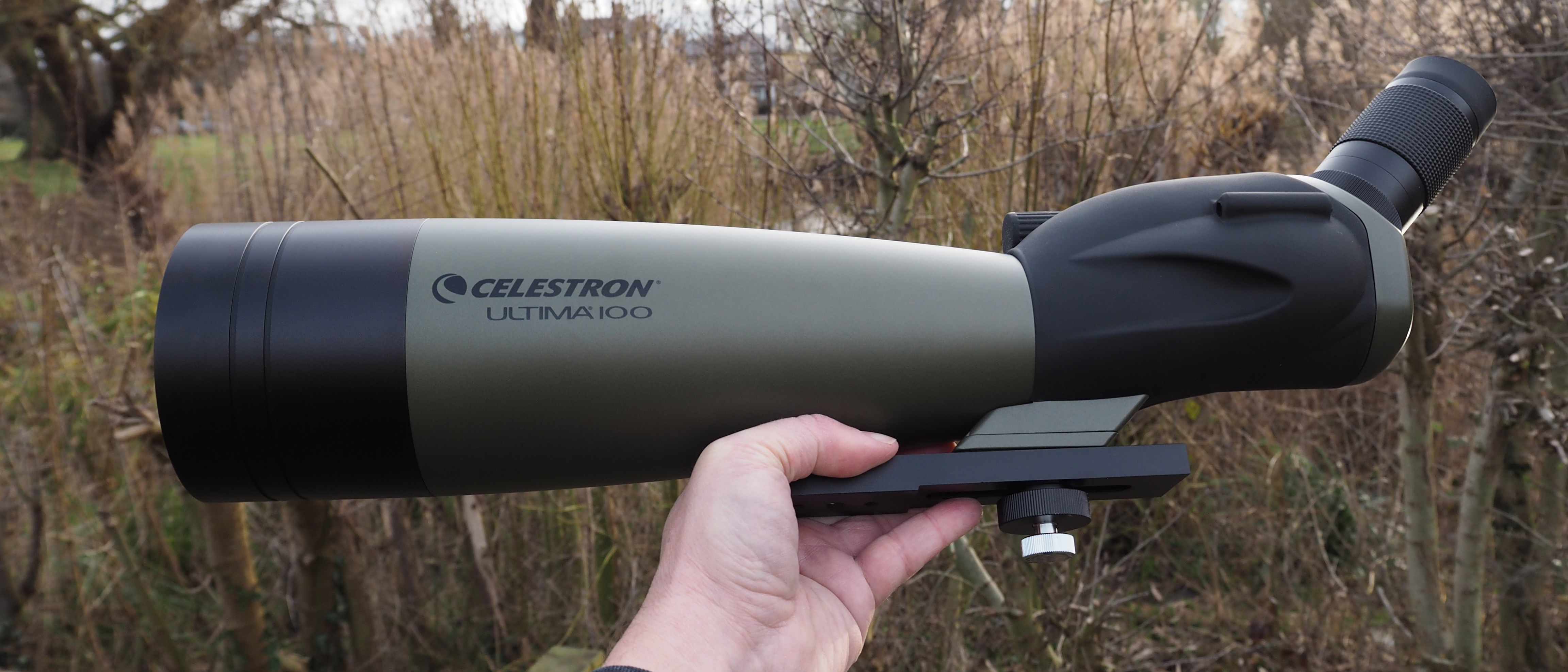Digital Camera World Verdict
The bigger the lens the brighter the view runs the rule of thumb, with the Celestron Ultima 100 spotting scope’s whopping 100mm optic ensuring that it’s not only adept at allowing us to sharply view animals at distance in lower light levels on land, but to also point the device skywards for close up views of the heavens. The only potential downside here for anyone wanting to get out and about with this water and fog-proof scope is its size, at 22 inches in length, even if it is lighter than looks might initially suggest. A tripod is an essential extra, while some minor assembly – adding the tripod bracket and screwing the zoom eyepiece into place – is required out of the box. However, with a maximum 66x magnification allied to that 100mm objective lens, we’re getting a shedload of observational power at our fingertips for the budget price being asked.
Pros
- +
Huge objective lens and broad magnification range
- +
Fogproof and waterproof
- +
A powerful scope at a budget price
Cons
- -
Big and bulky
- -
Requires a sturdy tripod for use
- -
More expensive scopes are sharper
Why you can trust Digital Camera World
It’s our experience that the Celestron brand can be relied upon for delivering a good value, quality-made product. And while, when it comes to the best spotting scopes, it may not always offer the sharpest around, it nevertheless hits its intended price point with very little in the way of compromise.
We’d wager the same will prove true of the Celestron Ultima 100, so named because of its generous, class-leading 100mm objective lens. In theory, this not only enables us observers to view wildlife on land but to also reach for the stars and enjoy a spot of astronomy on the side. So, in effect, what we’re getting here is an affordable telescope and spotting scope in one.
Specifications
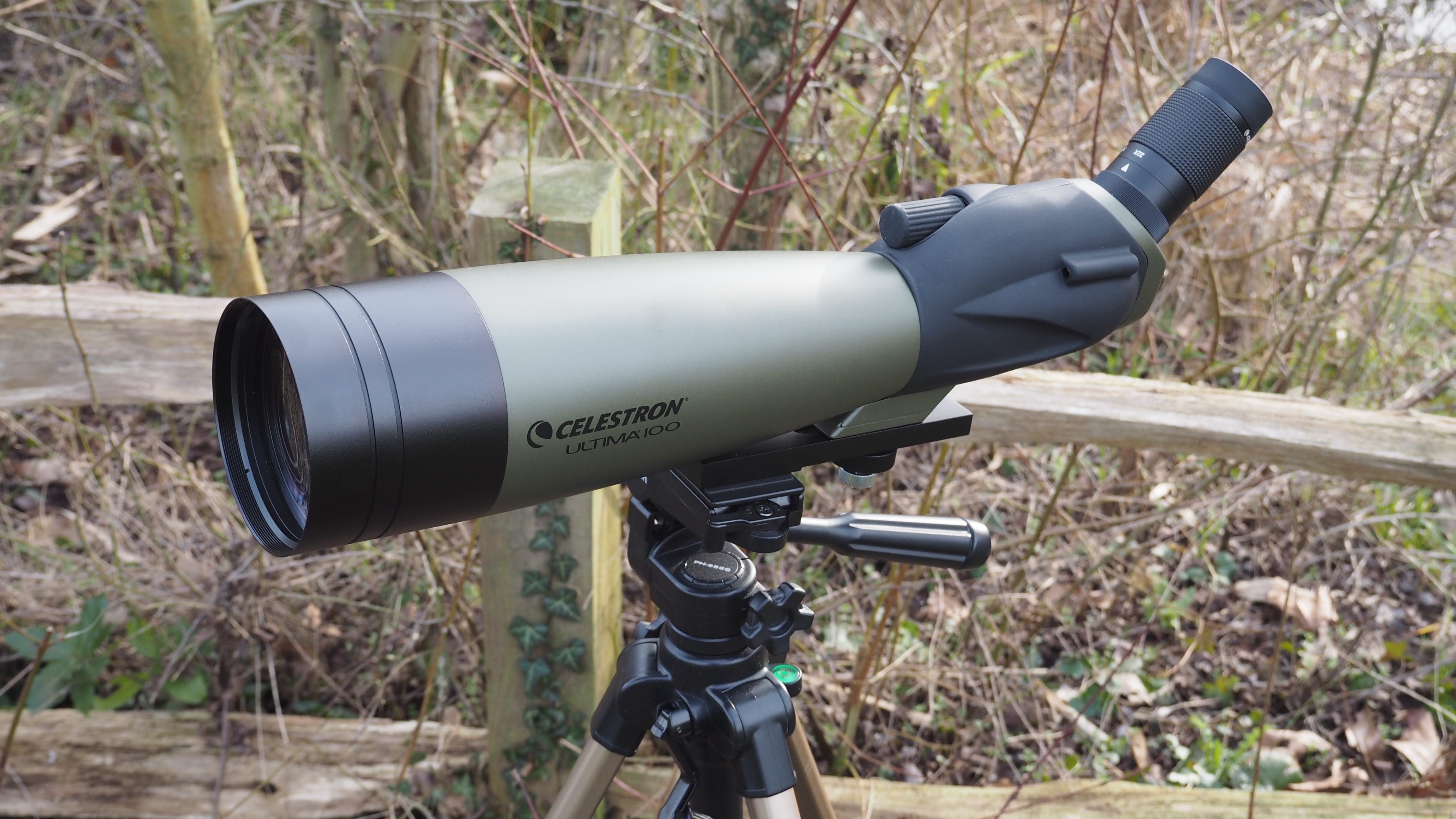
Magnification: 22x-66x
Objective lens diameter: 100mm
Field of view at 1000 yards: 94-52 feet
Closest focusing distance: 33ft
Eye relief: 18mm
Weight: 2.04 Kg
Dimensions: 22x7x7-inches
Key Features
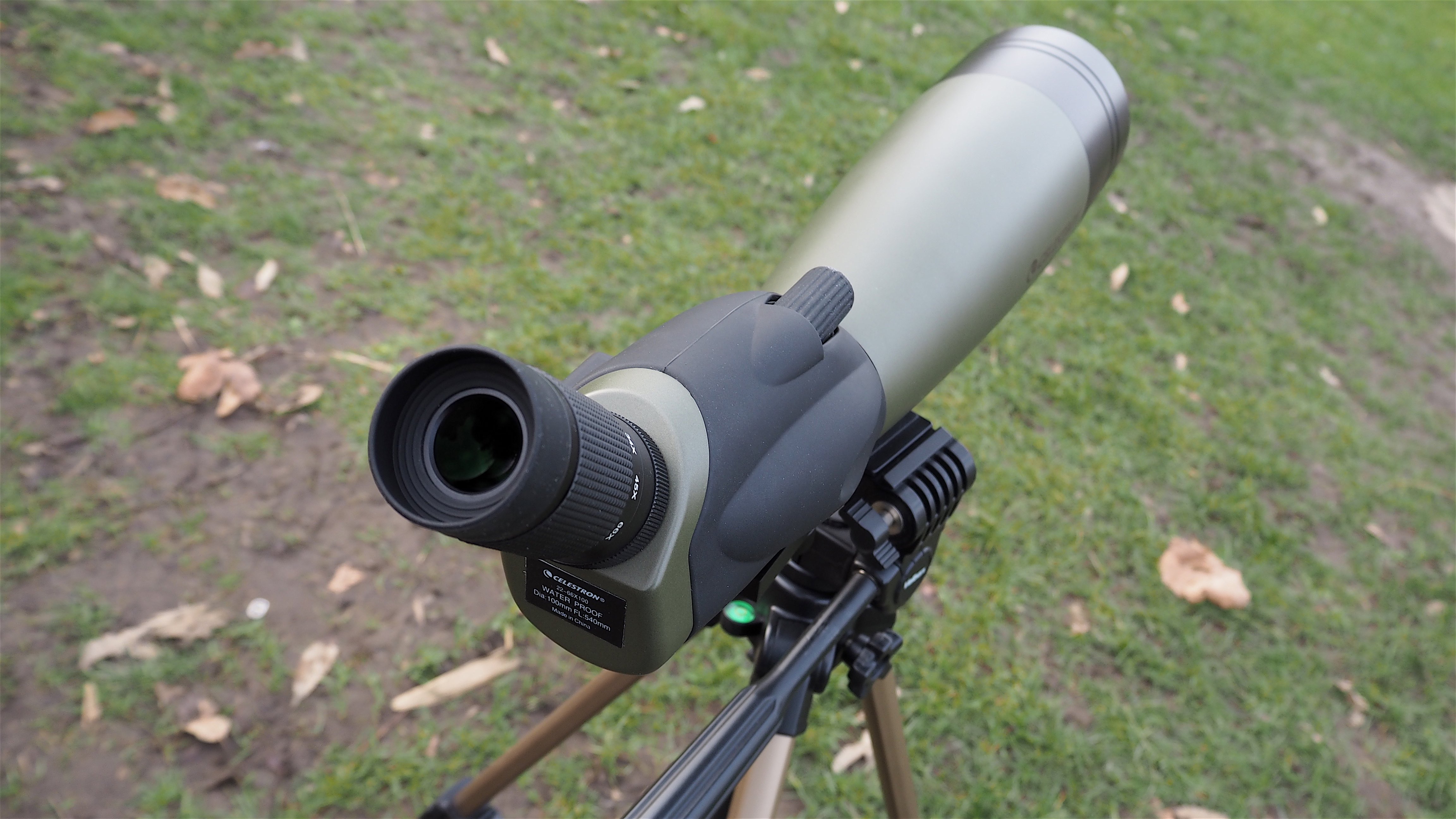
As we’d expect, given that the Celestron Ultima 100 spotting scope is intended for both wildlife watching and stargazing at long distances, the construction is both fog-proof and waterproof, while featuring multi-coated optics for optimum light transmission.
Suggesting itself as a jack of all trades, the magnification range on the provided screw-on eyepiece runs from a respectable 22x, at which it should be possible to achieve wobble-free viewing, to a generous 66x, meaning a tripod will be a must. Given the size of the scope itself, we’d recommend investing in a sturdy tripod – luckily we already owned one that can handle a DSLR and telephoto lenses for photography, and that provided perfectly stable support here.
Build & Handling
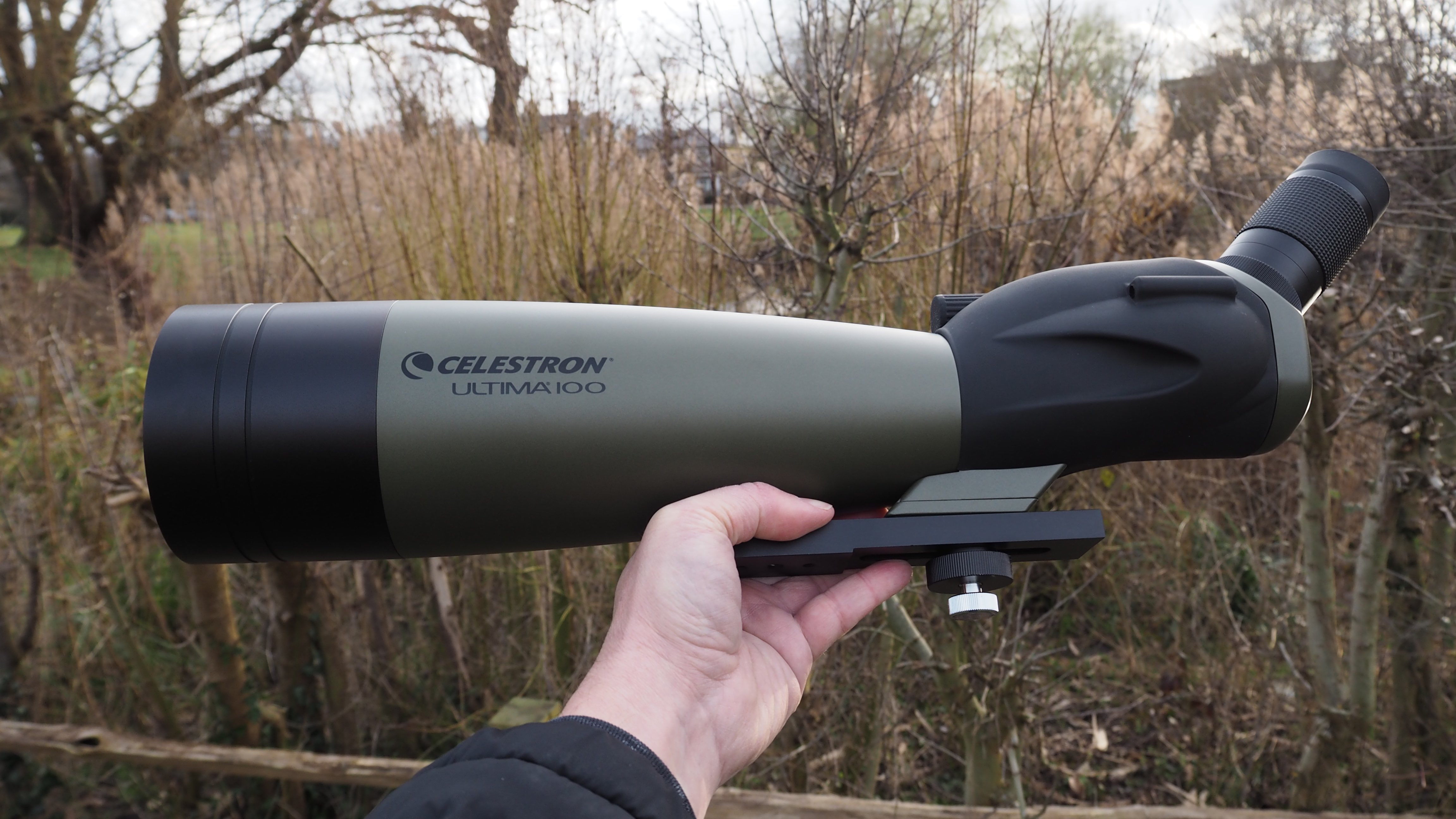
The cleverly attractive design of the Celestron Ultima 100 spotting scope actually makes it look sleek and streamlined, despite being a chunky beast that requires some minor assembly straight out of the box before we can begin using it.
The assembly bit involves attaching the provided extendable tripod adapter, which is simply screwed into place at the base. The 22-inch length of the scope itself, broadly mirroring the distance between our hip bone and our knee cap, means that a tripod is an essential extra purchase if we don’t already own one. There’s no way we’ll be attempting to use the scope handheld this time.
All that being said the scope is lighter than its solid build and robust looks suggest. A soft carry bag is provided out of the box that allows us to sling the scope over our shoulder. We also get a lens cloth and a printed copy of the manual.
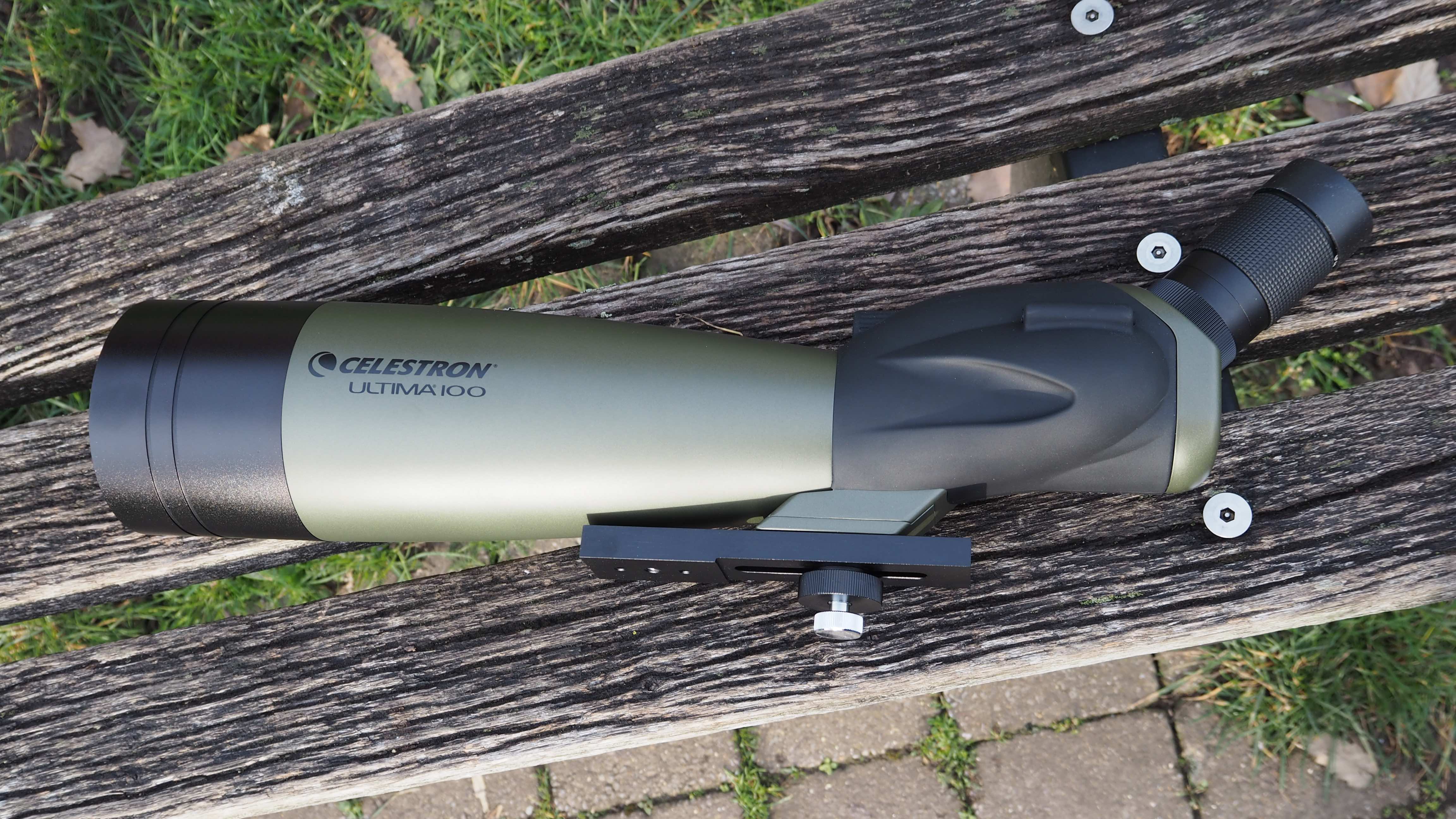
The provided zoom eyepiece is inserted at a standard 45° angle, although a straight eyepiece version of this scope is also available, this eyepiece needs to be fixed into position before we can start using it. This again is simply screwed into place by hand. Markings on the eyepiece barrel reveal the range of magnification settings on offer, which run between a minimum of 22x, at which it’s just about possible to achieve a judder free image without a tripod, and a maximum of 66x.
A protective slip-on rubber cap is provided for the eyepiece, while a large hard plastic clip-on lens cap protects the lens when the scope’s being transported or is otherwise not in use. It did fall off within the carry bag a couple of times when we were using it, so there’s the likelihood that this and the small eyepiece cap could get misplaced over time.
Performance
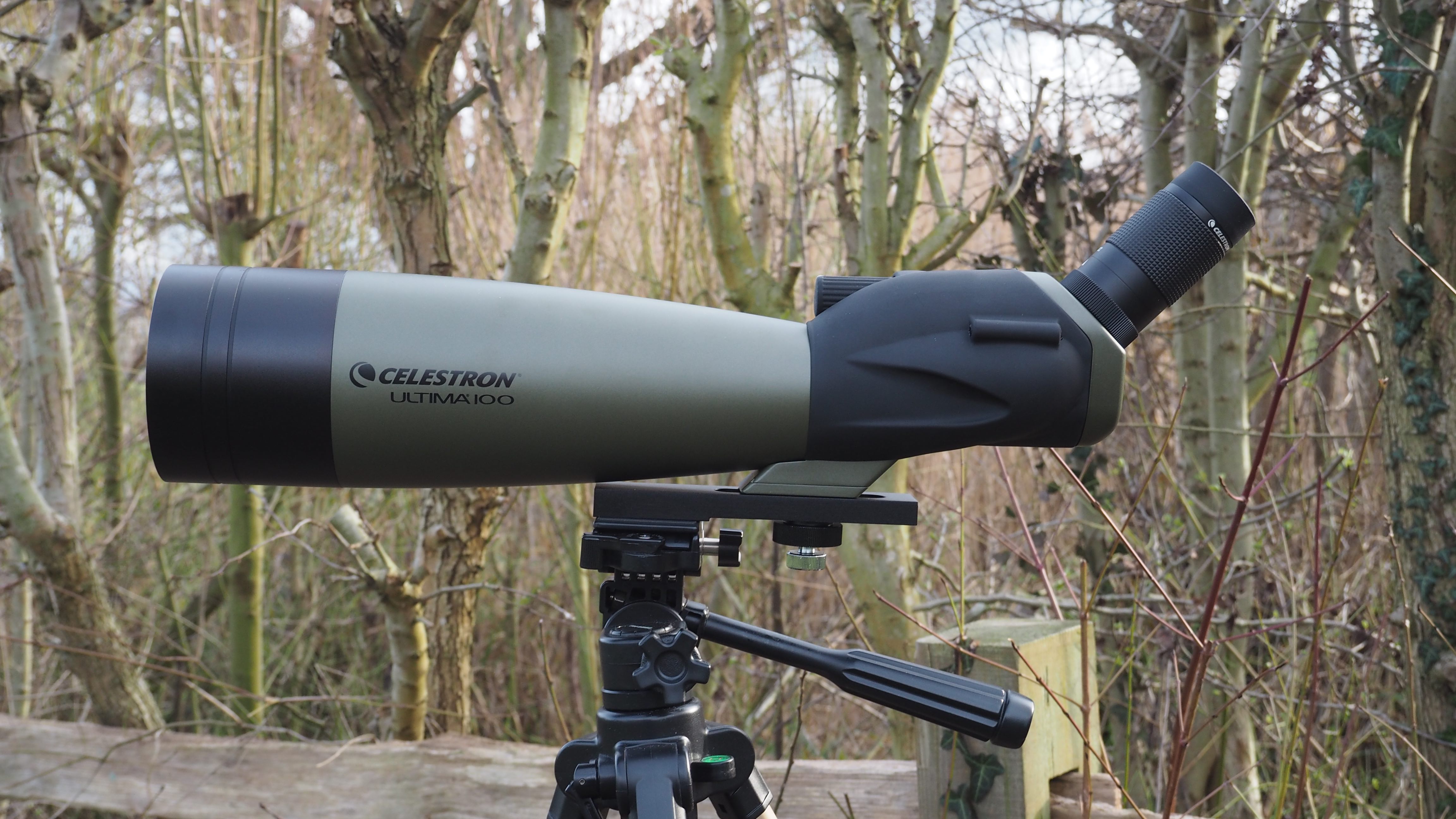
The 45° angled eyepiece on our review sample, as opposed to the alternative of a straight eyepiece, proves ideal for those of us who want to comfortably observe from a standing position when the scope is tripod mounted. Altering magnification to suit our intended subject is as simple as a twist of said eyepiece, while the focus knob halfway down the body of the scope is large and obvious enough that adjustments can be made intuitively in real-time while our eye remains glued to the eyepiece so as to not lose our intended visual quarry.
In terms of sharpness, we’d suggest the Celestron Ultima 100 is sharp enough for keen amateur use, though the optical quality is obviously not up to the level of rival Zeiss and Leica optics costing several times as much. Used to view the Moon at night, we were able to see the grey markings and scars on its surface, while during the daytime we happily did not notice much in the way of chromatic aberration. Viewing birds on the branches of a tree against the sky, our view was free from the normal telltale purple fringing visible in some budget optics where the edges of the branches meet said sky.
Verdict
The Celestron Ultima 100 spotting scope may be big, but it’s not without beauty – and, in looking for a scope with plentiful light-gathering capability, we really do feel here that we’re getting a lot for our money. With the ability to achieve close-up details of birds and even pull the Moon closer all within the one device, this is a flexible tool for any wildlife watcher and nature lover who has wanted to expand their horizons, achieve satisfying results, and not have to spend a fortune to do it either.
Yes, there may be sharper alternatives out there, but they cost many more times the price of this all-encompassing observational tool. Good value, good results – there is very little here we can reasonably take issue with at an amateur or enthusiast level.
Read more:
• The best spotting scopes
• Best binoculars
• Best budget binoculars under $100
• The best monoculars in 2021
• The best night vision goggles and binoculars
Gavin has over 30 years’ experience of writing about photography and television. He is currently the editor of British Photographic Industry News, and previously served as editor of Which Digital Camera and deputy editor of Total Digital Photography.
He has also written for a wide range of publications including T3, BBC Focus, Empire, NME, Radio Times, MacWorld, Computer Active, What Digital Camera and the Rough Guide books.
With his wealth of knowledge, Gavin is well placed to recognize great camera deals and recommend the best products in Digital Camera World’s buying guides. He also writes on a number of specialist subjects including binoculars and monoculars, spotting scopes, microscopes, trail cameras, action cameras, body cameras, filters and cameras straps.
